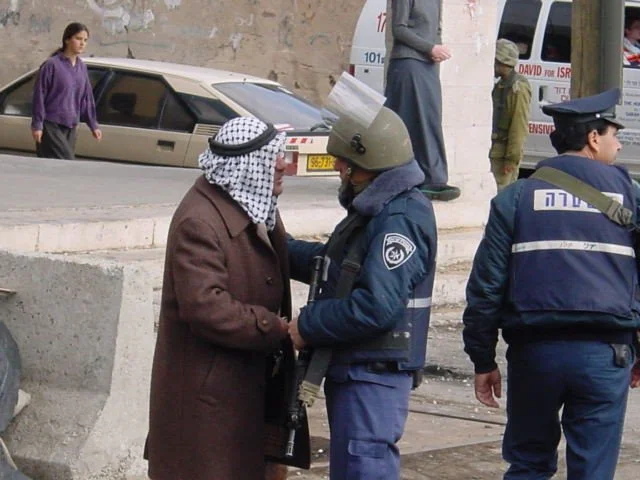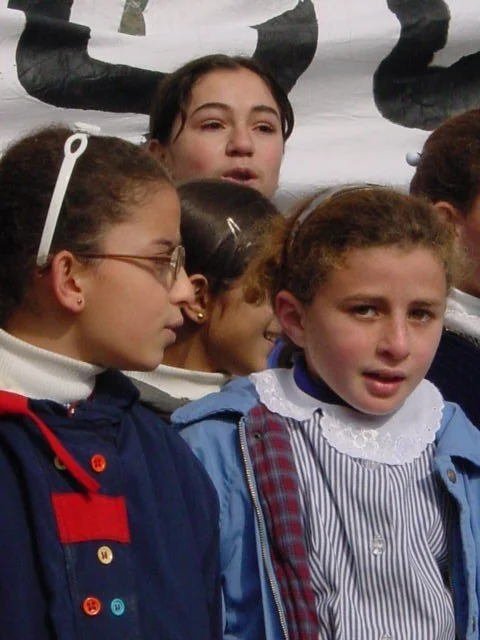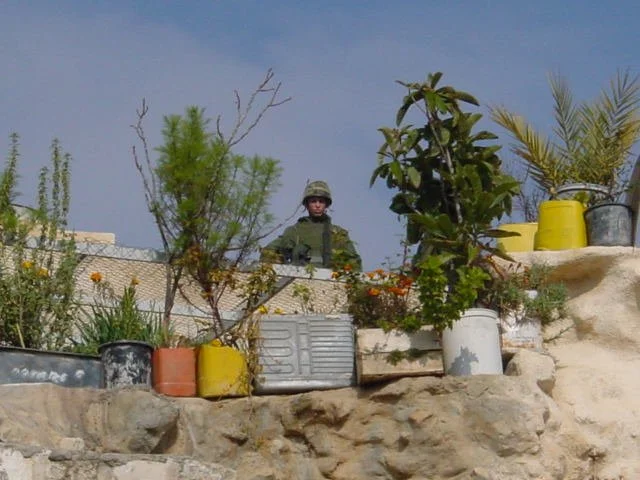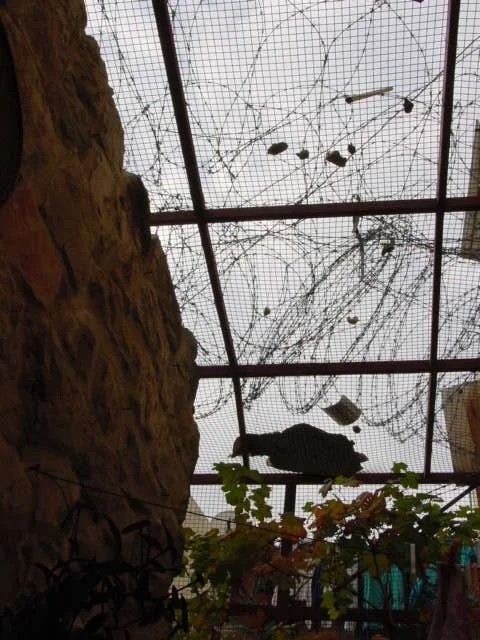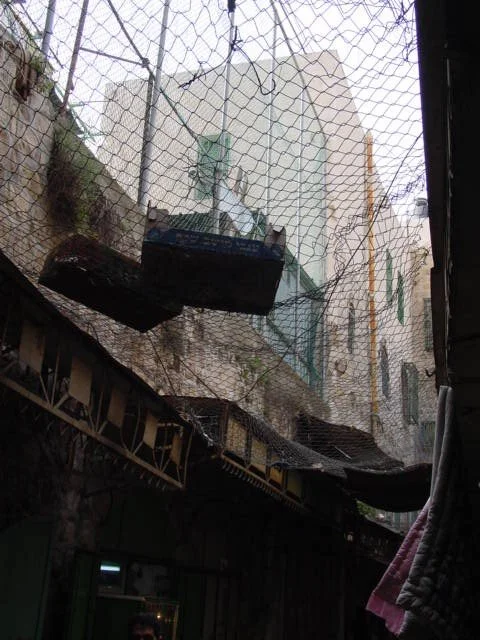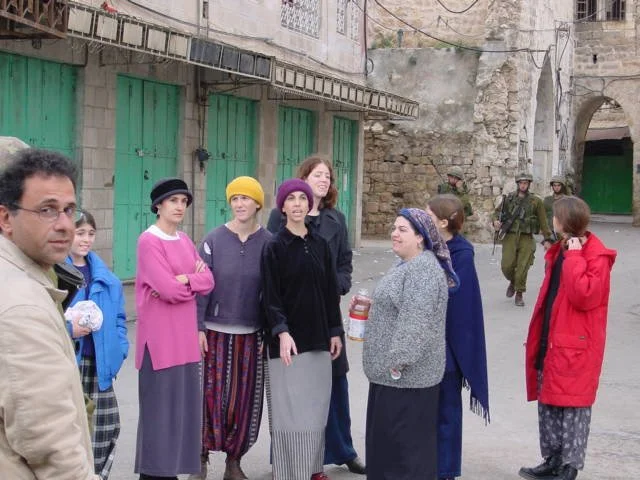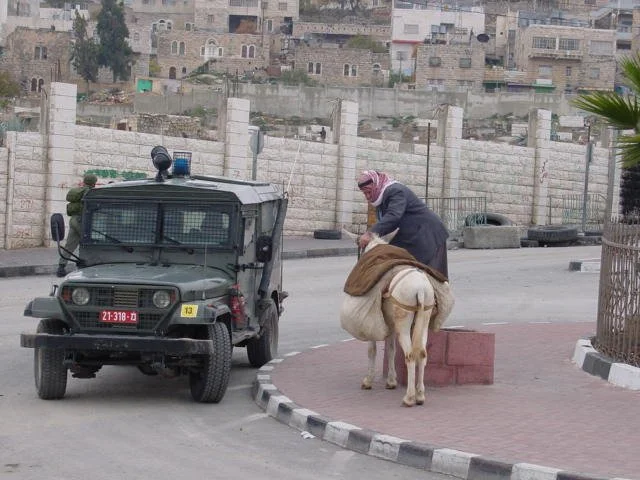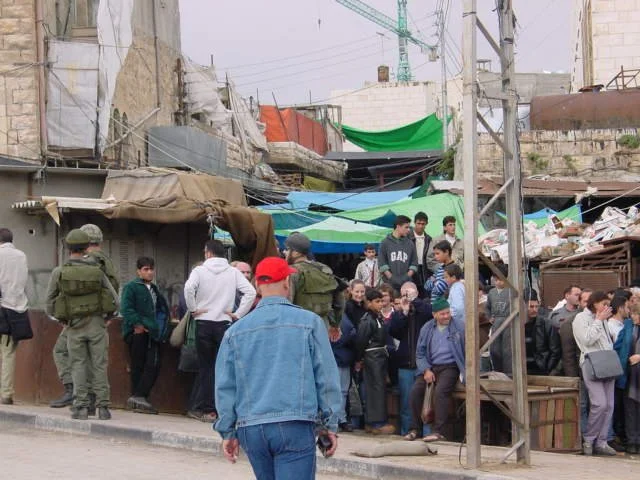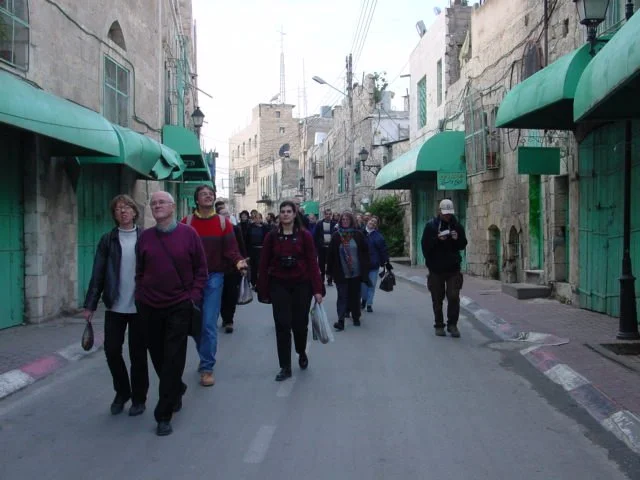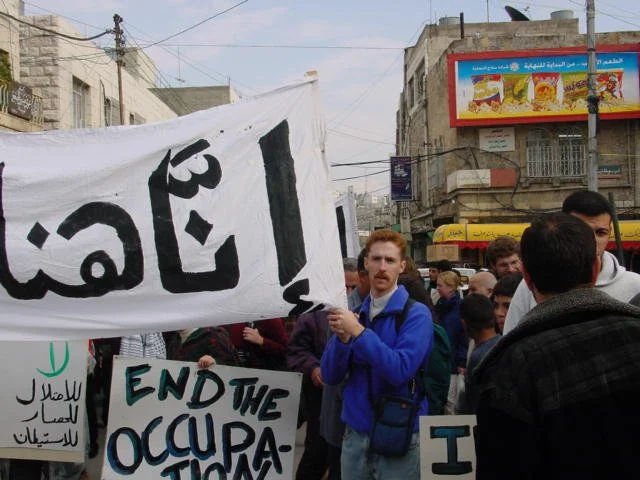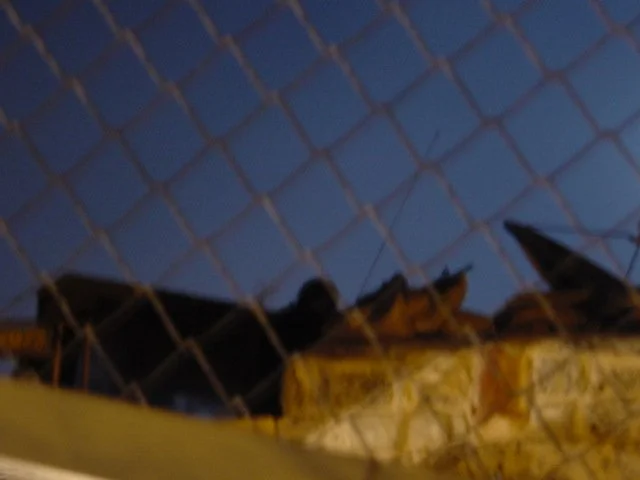December 10, 2000
A Palestinian man speaks with an Israeli police officer in Hebron, Palestine
We had received an invitation to go to Hebron from a group called Internationals in Palestine. Mostly made up of folks in Ramallah and Jerusalem, these are Westerners from Europe and the Americas who wanted to make it clear that they are staying and facing the situation in solidarity with the Palestinian people rather than fleeing.
Palestinian girls at this school have had three days of lessons due to an extended Israeli curfew over the Old City of Hebron
We headed to Hebron, since it has the well-earned reputation of being the worst of the worst. Since the Intifada, the Palestinians in H2, the Israeli-controlled old city part of Hebron (or Al-Khalil in Arabic) have been under curfew for 70 days in a row, only permitted to leave home for a few hours on certain days, when they buy food and try to work and go to school. The effect has been devastating economically; without work, people are without money, and so many are having great difficulty witht he basic necessities of life. In the Old City, this curfew on 40,000 Palestinians has been for the benefit of fewer than 500 Israeli settlers.
Israeli military outpost on the roof of a Palestinian home in Hebron
This is not the first bout of curfew for these people (when Israeli settler Baruch Goldstein shot and killed 29 Palestinians while they were worshipping at the mosque in 1994, they were put under a 40 day curfew), but it is the longest. We were fortunate enough to be there on a day when the curfew was lifted until 1 PM.
Our first stop was a school for girls that overlooks the Old City settlement. Because of where it is, the school has been open three days this year. Another school has been confiscated by the Israeli military because of its strategic location.
We then went to visit one of the Palestinian homes that is next to the Israeli settlement. Most of these homes have Israeli soldiers stationed on their roof. The stairways to these outposts come out of the settlement, so all settlers have access to them. As such, this home is constantly having stones and trash dropped into its courtyard. They have encased their home in a cage, so now the stones and bottles don't get through. But still, things like eggs and liquid refuse sometimes fall from above.
Palestinians in the Old City of Hebron have installed wire mesh above their home because of Israeli settlers dumping their garbage on them
We then went to the Old City to do some shopping (where there is a similar horizontal separation between Palestinian and Israeli).
Chain link fencing above the Old City market in Hebron, keeping Israeli settler garbage at bay
A group of Israeli settler women have effectively shut down the Old City of Hebron. There are 500 Israeli settlers and 40,000 Palestinians living here
The same group of Israeli settler women moments before Israeli soldiers attempted (unsuccessfully) to arrest one of them
Just outside of the market, a group of five Israeli settler women were in effect holding the area hostage. Because of their presence, the soldiers would not let Palestinians pass through from the market across the town center. Marthame saw one woman throw a stone at the Palestinians hemmed into the market. Another taunted them and called the Westerners who were watching "Nazis." Elizabeth was the focus of her vitriol for a while (until a soldier was nice enough to push Elizabeth away).
A Palestinian man mounting his donkey next to an Israeli police jeep in Hebron
Some of the women and young girls targeted the photographers and journalists gathered around, trying to throw water on them and their cameras (sometimes quite successfully, other times seemingly just for fun).
Israeli police and soldiers prevent Palestinians from leaving the Old City market because of the presence of the Israeli settler women in Hebron
The apartheid situation of the Old City was readily apparent. A handful of settlers had the freedom to go wherever they wanted, as soldiers held the hundreds of Palestinians in the market.
Internationals in Palestine walking through the shuttered streets of Hebron due to curfew (which is only enforced on the Palestinians living there)
At one point, the Israeli authorities decided one of the settler women had made enough trouble and tried to arrest her, but the rest of the women besieged them and pushed the police away. She was back at the market in a matter of minutes, in full taunting form.
We saw one Palestinian man plead with the soldiers to let him cross the street to dispose of the trash from this market stall. As the one o'clock curfew was approaching, he was finally, after maybe ten minutes, allowed to wheel his rubbish bin across the street. We, on the other hand, were virtually invisible (except to the settlers, who clearly did not welcome our presence), passing wherever we wanted.
It was, we were told, a typical day in Hebron.
Marthame holding a banner as Internationals in Palestine show their solidarity with besieged Palestinians marching through the streets of Palestinian-controlled Hebron
We continued our march into the Palestinian Authority section of Hebron (H1), visiting the hospital and hearing about the sheer numbers of wounded that have passed through the hospitals revolving doors.
By the time we got back to the Israeli side (H2), the curfew on Palestinians was in full effect. The streets were deserted except for the soldiers, a few Palestinians trying to get home, and some settler children again calling us "Nazis." We couldn't help but think about the divisive rhetoric about putting children on the "front lines" of conflict.
An Israeli soldier on the roof of our home for the night with a Palestinian family in the Old City of Hebron
We ended up spending the night in a Palestinian home in the Old City with an Israeli soldier stationed on our roof. He regaled us with songs in English as gunshots (not his, thank goodness) echoed into the hills. Nonetheless, we slept like babies.

